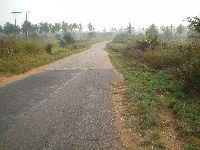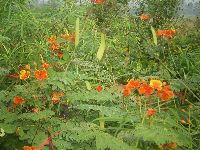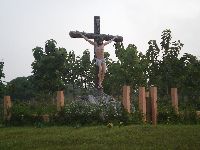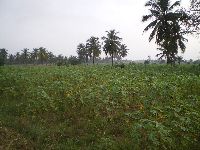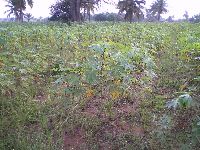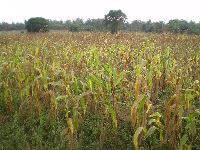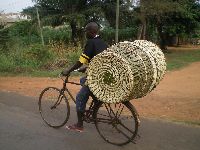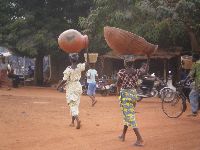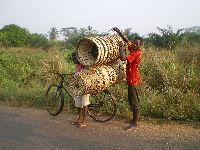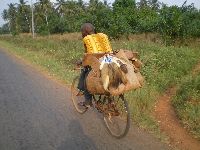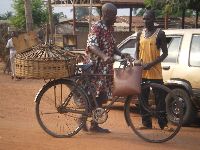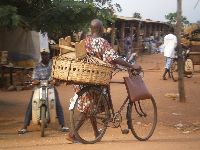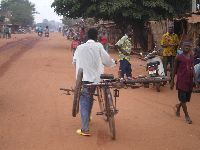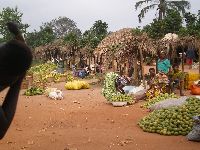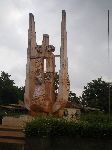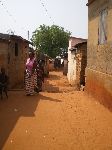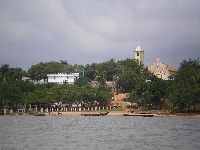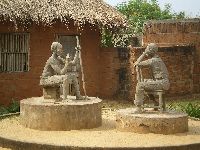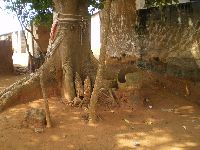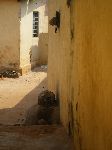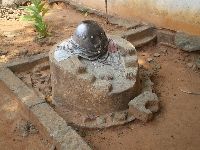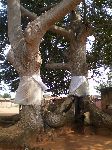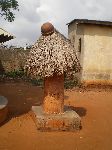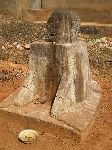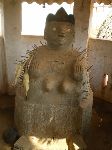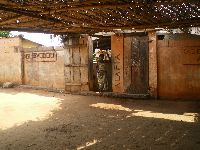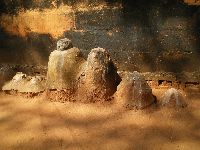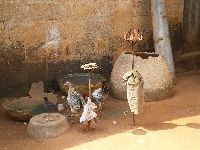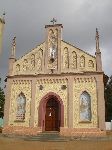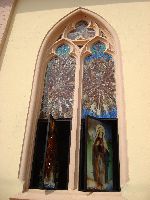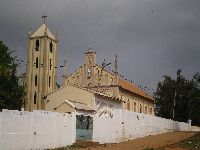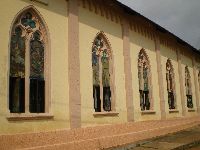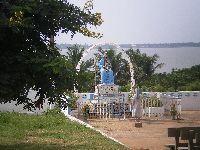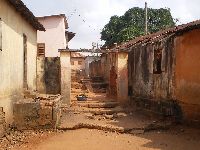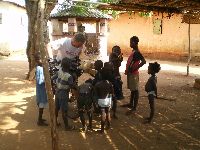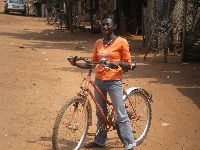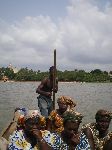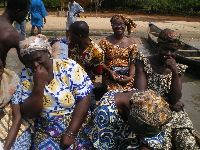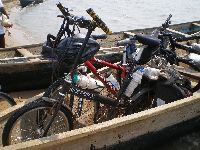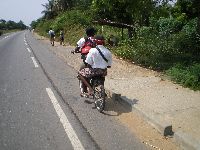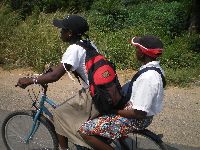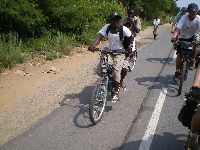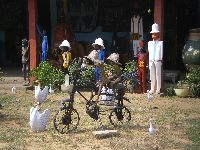|
Togo -
Benin: People-to-People |
||
Dispatch 12 - Togoville |
||
|
Aneho-LOME (45km, 28mi) An opportunity to take a side trip to Togoville
or
the beach. |
||
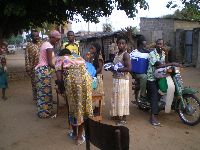
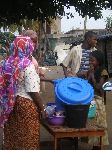 Consistent with
other towns in the region, Aneho offered few options for breakfast.
Omelet table that were sometimes available in the past were no where to be
found. One option was porridge. The porridge seller offered
drive up serve. Buyers were arriving by motorcycle, bought a back of
porridge and then drove away -- you could bring your own container or have
it delivered in a plastic bag. Consistent with
other towns in the region, Aneho offered few options for breakfast.
Omelet table that were sometimes available in the past were no where to be
found. One option was porridge. The porridge seller offered
drive up serve. Buyers were arriving by motorcycle, bought a back of
porridge and then drove away -- you could bring your own container or have
it delivered in a plastic bag.
This is clearly an agricultural area. Many of the farms looked much larger than are typical in the forest belt along the coast. The large farms in this area are planted in cassava / manioc and corn /maize.
As we came into town, it was clear that it was market day in Vogan.
[Most tourist arrive from the lake side and they don't have a universally good time in Togoville; useless guides, extravagant prices, surprise charges, hustles and hassles are a common welcome at the lake shore.]
Icon: A representation of an personage or object, often something sacred as in a saint, angel or Christ. Fetish: The attribution of religious or mystical qualities to inanimate objects.
In Voodoo there are male and female sacred spaces (shrines, altars and icon figures). Larger sacred spaces are overseen by a priest or priestess. Smaller sacred spaces may be the property of a family and attended to by that family. Interestingly, female sculptures are covered with roofs and male sculptures are not -- left out in the beating sun.
In the early 1970's the Virgin Mary appeared here, prompting the building of a shrine and the Pope John Paul II to visit in August, 1985, on Apostolic Voyage 27 (he made a total of 104). During the visit the Pope is said to have prayed for the first time with animists and paid homage to a sacred snakes. The boat he used to cross the lake is now considered sacred and sits on a pedestal. Amidst the struggle for the heart and minds of the faithful that the tourist spend a lot of time parsing, there is normal life in Togoville; people carrying on there daily business, children looking for the next amusement in a non-electric environment -- sometimes it is a tourist -- people taking a bicycle ride, etc.
Back on the coastal highway, even with the increased traffic a paved shoulder made travel relatively pleasant until we came to the outskirts of Lome. Prior to that our timing was good for accompanying some cheerful student bicycling from school to their homes. The hell of riding into Lome didn't lend itself to photography. From the
saddle, the coastal road into Lome is chaotically busy, dusty and smoky.
While the shoulder disappears and the road become pocked with potholes,
piles of loose sand and other hazards, cars, motorcycles and huge trucks
whizzed by within inches. The only road passes through an industrial zone. The
air, hazy with the sand, dust and dirt of the big Before arriving in purgatory a cheerful art gallery had a piece of two-wheeled art in the yard that lifts the spirit. It is much more representative of the journey. Let this be the parting shot and memory. |
Addendum: | |
|
||
|
|
Unique Programs To Special Places For Memories Of A Lifetime!
"Hosted by
DreamHost - earth friendly web hosting"
|
